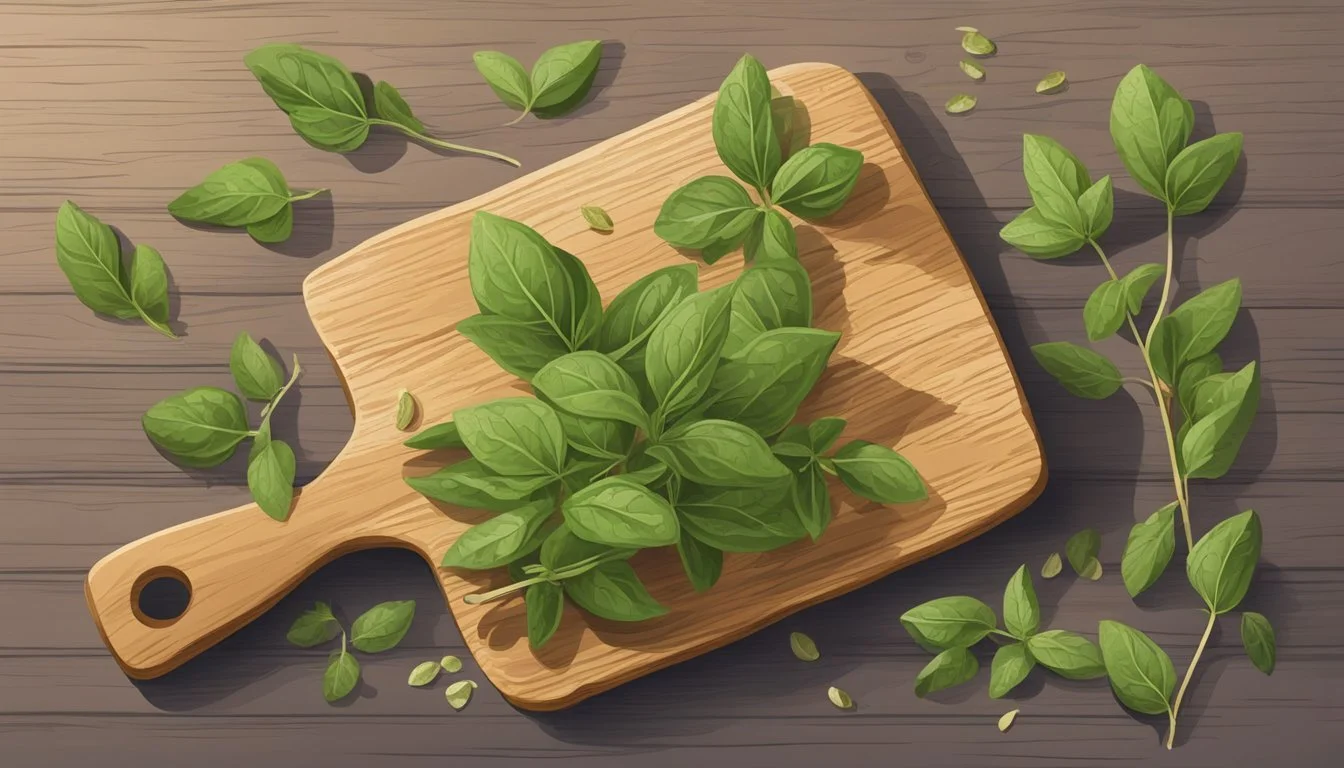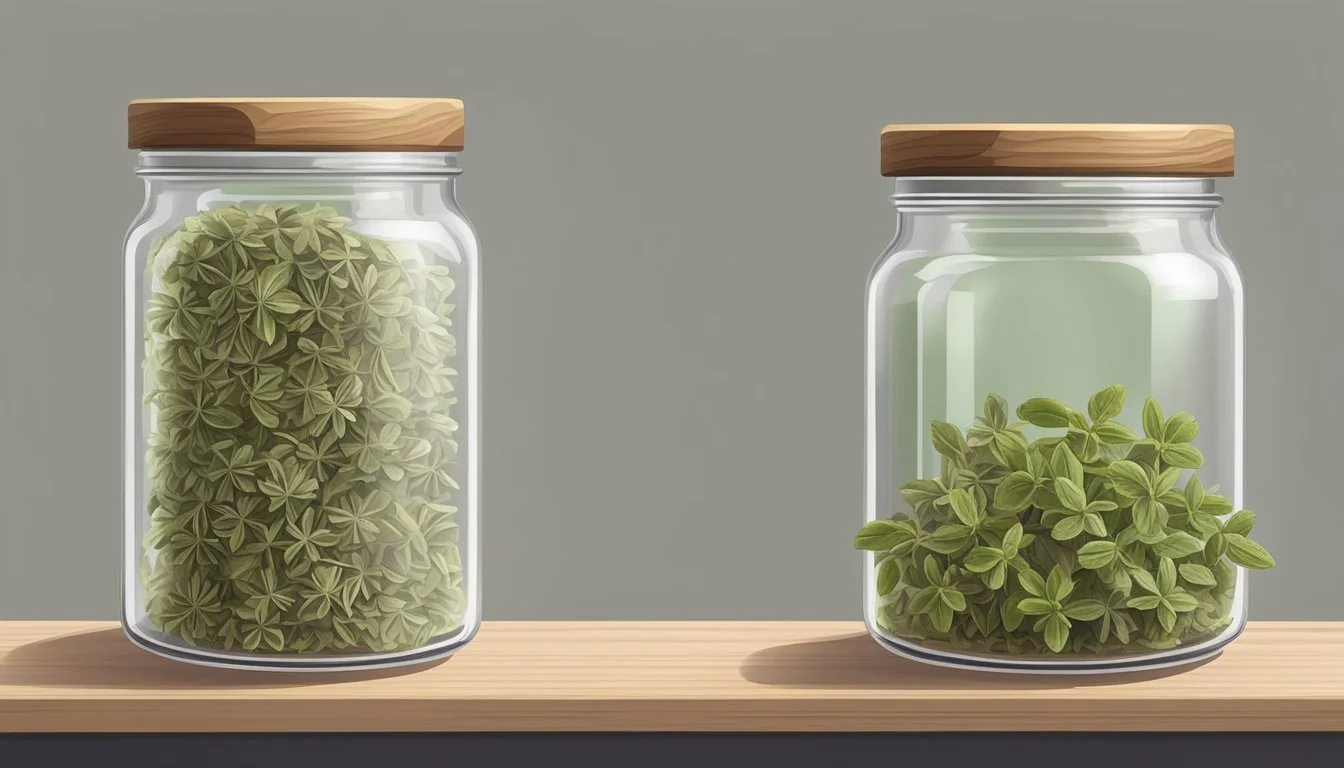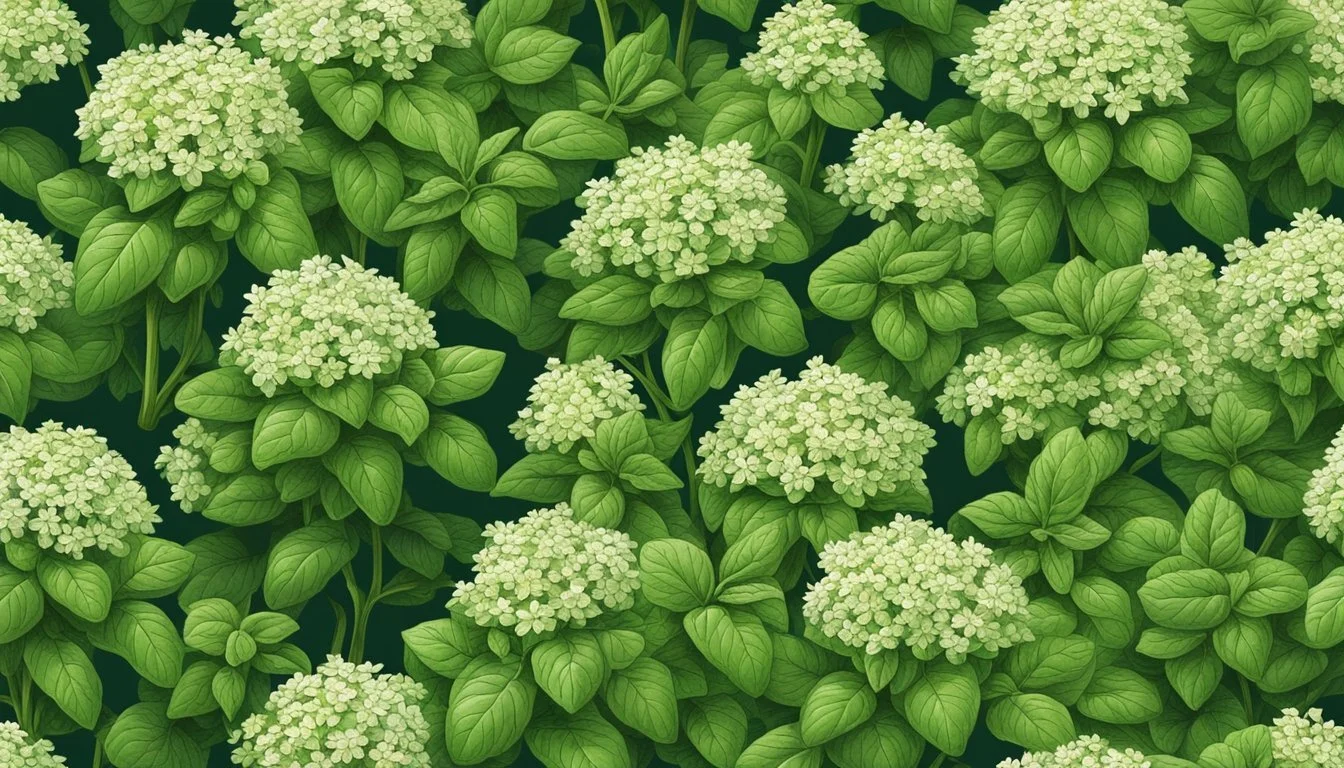How Long Does Oregano Last?
Understanding Spice Shelf Life
Oregano is a versatile herb commonly used in various cuisines for its earthy and robust flavor, but like all herbs, it has a finite shelf life. The longevity of oregano depends on its form—fresh, dried, or as an oil. Fresh oregano typically lasts between 5 to 7 days when stored in a refrigerator, ensuring its leaves stay flavorful for culinary use. It's important to note that fresh oregano will only last 2-3 days at room temperature before it starts to deteriorate.
When it comes to dried oregano, the shelf life extends considerably due to the removal of moisture, which inhibits the growth of bacteria and mold. Dried oregano can retain its taste and aromatic properties for 1-3 years if it's stored correctly in an airtight container, away from sunlight and heat. However, over time, dried oregano will inevitably begin to lose its potency, making it less effective in seasoning dishes.
Oregano oil, appreciated for its various health benefits, also has a significant shelf life. Properly stored oregano oil can last up to 6 years. The key to preserving its shelf life includes keeping the oil away from direct sunlight and in a cool, dark place to maintain its beneficial properties. Consumers should be aware that while oregano may not spoil in the traditional sense, its flavors and benefits will diminish over time, indicating that older oregano might not provide the same culinary or medicinal impact as fresher counterparts.
Understanding Oregano
Oregano is a versatile herb that is central to Mediterranean and Italian cuisine, available in both fresh and dried forms. It is also valued for its nutritional and medicinal properties.
Types of Oregano
Oregano belongs to the mint family, and while there are several varieties, the most commonly used in cooking are Origanum vulgare, which is often referred to as Greek or Italian oregano. Oregano's close relatives, such as thyme and marjoram, share a similar flavor profile but are distinct in their own right.
Culinary Uses
Oregano is a staple in an array of Mediterranean dishes and is integral to the flavor of many Italian dishes. Whether used fresh or as dried oregano, it contributes a warm, aromatic flavor that is more intense when dried. Fresh oregano leaves are used to impart a more subtle taste, often added toward the end of the cooking process to preserve their delicate flavor.
Dried Oregano: Potent and commonly utilized in seasoning blends for sauces, marinades, and dressings.
Fresh Oregano: Best when used to finish dishes like salads, pizzas, and pastas.
Nutritional and Medicinal Properties
Oregano is rich in antioxidants, with dried oregano being particularly concentrated. The herb exhibits anti-inflammatory properties and is commonly used in traditional medicine. Additionally, oregano essential oil is acknowledged for its antimicrobial and antifungal benefits.
Antioxidants: Helps protect the body from free radicals.
Anti-inflammatory: May reduce inflammation and aid in the management of inflammatory conditions.
Fresh Oregano Storage
When preserving fresh oregano, the aim is to maintain its flavor and prevent wilting. This can be achieved through proper harvesting, refrigeration, freezing, or immersing in oil or vinegar.
Harvesting and Preparing
The best time to harvest oregano is just before the morning dew evaporates to ensure the leaves have the highest concentration of oils. After cutting, one should gently rinse the leaves under cold water to remove any dirt and debris. It's crucial to pat the oregano dry completely with paper towels or a clean cloth to prevent mold growth.
Refrigeration Techniques
To refrigerate fresh oregano, one should loosely wrap the dry oregano in a slightly damp paper towel and place it in a plastic bag or an airtight container. This method will typically keep the oregano fresh for 5 to 7 days. Ensuring there is minimal air in the bag or container helps to prevent the leaves from becoming limp or wilted.
Freezing Methods
For longer storage, freezing is suitable. One can either freeze the leaves whole, carefully placed in plastic bags or store chopped leaves in ice cube trays with water. Once frozen, these cubes can be transferred to a plastic bag. Freezing can preserve fresh oregano for up to one year without significant loss of flavor. One doesn't need to thaw the frozen oregano before using it in cooking.
Storing in Oil or Vinegar
Another approach is to submerge fresh oregano leaves in oil or vinegar, creating an infused flavor. These leaves must be dry and placed in airtight containers then submerged completely. Store them in the refrigerator, where the acidity of the vinegar or the anaerobic environment of the oil can help keep the oregano fresh for several weeks.
Dried Oregano Storage
For dried oregano to retain its robust flavor and aroma, appropriate storage measures are paramount. Understanding the drying process, employing best storage practices, and routinely checking for potency ensures peak quality preservation.
Drying Process
Before storage, dried oregano should have a consistency that is dry and crumbly, indicating proper dehydration. The meticulous drying process is crucial as it directly impacts the spice's shelf life. Ground oregano can also be produced from dried leaves, but the initial drying quality sets the stage for longevity.
Best Storage Practices
Dried oregano is best kept in an airtight container placed in a cool, dark place such as a pantry, cupboard, or cabinet, away from heat sources and direct sunlight. To maintain peak quality:
Temperature: For optimal storage, maintain an environment between 40 and 50 degrees Fahrenheit (4-10 degrees Celsius).
Location: Steer clear of the stove, oven, or spice rack if they receive daily light or are subject to temperature fluctuations.
Humidity: A dry setting is imperative as moisture can lead to mold growth and loss of flavor.
Checking for Potency and Freshness
Dried oregano's peak quality persists for 1 to 3 years; however, its potency diminishes over time. To assess freshness:
Color: Look for vibrant green hues; a yellow or dull appearance suggests staleness.
Aroma & Taste: Conduct a sensory test, crushing a small amount to check if the distinctive aroma and flavor are intact. Lack of intensity indicates it's time to replace.
By adhering to these guidelines, one can ensure their dried oregano retains the best quality for an extended period.
Recognizing Spoilage
Proper storage can greatly extend the shelf life of oregano, but it is important to recognize when it has gone bad. Spoilage signs are not always evident, so it is crucial to know what to look for to ensure the herb's best quality and safety for consumption.
Signs of Deterioration
Discoloration: Oregano that is starting to spoil may exhibit a change in color, often becoming pale or developing brown spots.
Mold Presence: Any signs of mold growth, which could appear as fuzzy or moist spots, indicate that the oregano is no longer safe to use.
Off Scent: Fresh oregano should have a vibrant, herbaceous smell. If the scent is musty or unpleasantly sour, this could be a sign of spoilage.
Flavor Loss: Over time, dried oregano may lose its potency. While less flavorful herbs are not necessarily spoiled, a significant lack of flavor is typically an indicator that the oregano is past its prime.
Safe Usage Assessments
To determine if oregano remains suitable for use:
Visual Inspection: Examine the oregano for discoloration or mold.
Smell Test: Smell the oregano for any off odors.
Taste Test: If it passes the visual and smell tests, taste a small amount. If the flavor is weak or absent, consider replacing it.
Storage Tips:
For dried oregano, keep it in a cool, dry place away from light.
Fresh oregano should be refrigerated and typically lasts up to two weeks.
To extend the freshness of oregano, one can freeze it.
By following these guidelines on how to store oregano and conducting regular checks, one can ensure they are using oregano that is safe and flavorful.
Maximizing Shelf Life
To retain the potency of oregano, implementing correct storage techniques and maintaining optimal conditions are crucial. The shelf life can be extended significantly by protecting it from detrimental factors such as heat, moisture, and sunlight.
Proper Storage Techniques
Drying Oregano: Oregano should be thoroughly dried before storage. This can be done by hanging the sprigs in a dry, ventilated area or using a food dehydrator.
Tight-Fitting Lids: Store dried oregano in a container with a tight-fitting lid to prevent exposure to air, which can diminish flavor and aroma over time.
Optimal Storage Conditions
Room Temperature: A cool, dry place at room temperature is ideal for storing dried oregano.
Avoid Heat and Sunlight: Keep the spice away from stoves, ovens, and windows where heat and sunlight can degrade quality.
Control Moisture: Dry environments prevent mold growth and maintain quality. Use desiccants if necessary.
When to Replace Spices
Taste and Aroma: Oregano should be replaced if it loses its characteristic aroma or if the taste becomes dull.
Timeframe: As a general rule, dried oregano should be replaced every 1 to 3 years to ensure it remains flavorful.
Substituting Oregano
When fresh or dried oregano is unavailable, understanding how to choose suitable alternatives and adjust recipes is essential to maintain the desired flavor profile in dishes.
Choosing Alternatives
In the absence of oregano, one can opt for several herbs to replicate its distinct flavor, especially in Italian dishes, stews, soups, pasta sauces, and marinades. The following table lists some common substitutes:
Substitute Flavor Comparison Best Used In Marjoram Milder and slightly sweeter Italian dishes, stews, sauces Thyme Earthy, less pungent Soups, stews, marinades Basil Sweet and aromatic Pasta sauces, Italian dishes
Marjoram is the closest in taste to oregano and can be used in a 1:1 ratio generally. Thyme, although a bit earthier and less robust in flavor, works well in soups and stews. Basil brings a sweet and fragrant note, suitable for pasta sauces and many Italian recipes.
Adjusting Recipes Accordingly
To effectively substitute oregano without compromising the dish's integrity, it is necessary to adjust the quantities accordingly:
Marjoram: Use a 1:1 ratio with oregano, adding a bit extra for intensity.
Thyme: Start with half the amount of oregano called for, then adjust to taste.
Basil: Implement a 1:1 substitution, keeping in mind its sweeter profile.
Test and taste as the dish progresses, ensuring the substitute complements the other ingredients without overwhelming them. Each spice has its unique properties, and slightly altering the amount used can help achieve a balance similar to that of oregano's role in the recipe.
Growing and Harvesting Oregano
Growing oregano rewards gardeners with fresh herbs and, when harvested correctly, can lead to a bountiful supply for culinary use. Proper cultivation and harvesting techniques are crucial for the best yield and flavor profile of this aromatic plant.
Cultivation Tips
To start growing oregano, seeds or cuttings should be planted in loose, well-drained soil with a target pH between 6.0 and 7.0. Soil temperature is best around 70ºF, and for those in colder climates, starting seeds indoors 6 to 10 weeks before the last spring frost is advised. Mixing several inches of organic matter, such as compost, into the soil prior to planting will greatly benefit plant health. Oregano plants thrive under full sunlight and should be watered regularly, ensuring they are not overwatered to prevent root rot. The garden area selected for oregano should be free of morning dew accumulation to mitigate plant disease risk.
Harvesting Your Own Spices
Harvesting should begin once the oregano plants have reached 4 to 6 inches in height and display a vibrant green color. Using gardening tools, such as scissors or shears, cuts are made just above a growth node or set of leaves. This will prompt the plant to branch and produce more foliage. It's best to harvest in the morning after the dew has evaporated for optimal flavor and to aid in the drying process. Rinse any dirt or mulch from the stems, shake off excess moisture, and then proceed with drying the oregano. Fresh oregano can last up to a week when properly stored, while dried oregano has a much longer shelf life. For those interested in oregano oil, it can be extracted from both fresh and dried leaves but requires a distillation process for concentration.






